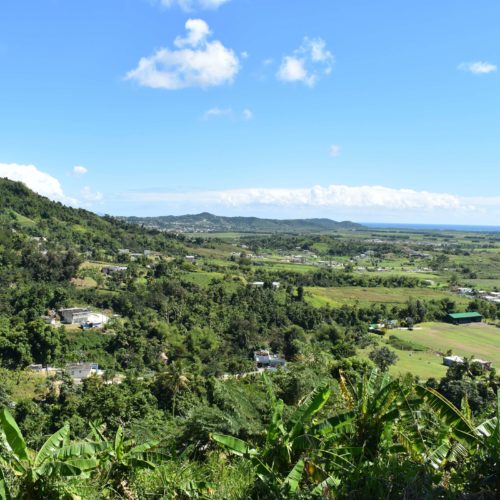The Extent of the 2016 Drought, and the Prognosis for 2017

(Note: This is the third and last in a series of articles relating to the dairy crisis. See the CSG-ERC Agriculture and Rural Affairs blog for previous articles)
Last year was a difficult one for agriculture in the northeastern states. While prices for almost all commodities were at lows unseen in decades, the intense drought that hit many of the states proved even more challenging.
Since June of 2016, 169 of the 244 counties from the 11 northeastern states in the CSG-ERC Region were declared designated disaster areas by the USDA. According to the United States Drought Monitor (USDM), 51.2 percent of the Northeast was experiencing moderate to exceptional drought at the end of October, the highest percentage since 2002 in the 17-year USDM record.
For example, Worcester Massachusetts recorded only 23.44″ of rain through August of 2016, 10″ below the average for that period.
As a result of this drought, many farmers in the northeast were impacted financially – reduced product available for sale, need to buy in feed for farm animals due to stunted crops, increase in feed price due to lack of supply.
What Federal Assistance Is Available
The disaster designations trigger the availability of low-interest FSA EM loans to eligible producers in all primary and contiguous counties.
The Noninsured Crop Disaster Assistance Program (NAP), reauthorized by the 2014 Farm Bill and administered by the U.S. Department of Agriculture (USDA) Farm Service Agency (FSA), provides financial assistance to producers of noninsurable crops to protect against natural disasters that result in lower yields or crop losses
Statewide Efforts
Among the initiatives:
New Hampshire: The New Hampshire Senate and House Environment & Agriculture Committee have voted in favor of SB10, a drought relief bill to assist the state’s dairy farmers. The bill will be heard in the full House on March 23, and, if passed, will trigger a $2 million payment to the farmers hit hardest by the drought.
New York: It was anticipated that New York legislators will be putting assistance to the state’s dairy farmers into their budget.
Maine, Massachusetts, Connecticut and Vermont: These states currently have general dairy assistance programs in place. As a further step, Massachusetts launched a new Massachusetts Drought Emergency Loan Fund, allocating $2 million in micro-loans to family farms and other small business affected by the drought conditions.
Future Outlook
The seemingly heavy winter precipitation has replenished some watersheds, but groundwater levels remained near to below normal for a majority of the drought stricken area.
The USDM Release on January 26 indicated, after two months of winter, 41 percent of the Northeast was in a moderate, severe, or extreme drought, with another 20 percent being abnormally dry. January average stream flow ranged from much below normal to much above normal, with many areas near normal. Groundwater levels remained near to below normal for a majority of the drought-stricken areas. Reservoirs continue to increase slowly, but they remain below normal capacity.
According to a NOAA February 16, 2017 the drought forecast is ‘low’ confidence.
With the continuing low dairy price and the absence of an effective federal safety net program, should the drought continue through 2017, we will surely lose more of our already disappearing dairy farms. And our specialty crops and horticultural sectors will be severely tested as well.





